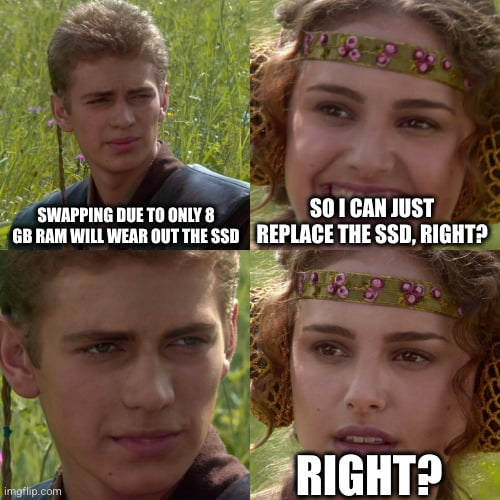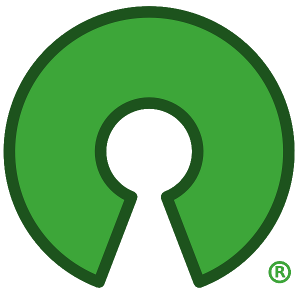







The Turris Omnia is an open, powerful router that comes with OpenWRT.
Turris adds an additional UI and features beyond that, but the OpenWRT UI is still available and the stock firmware can be completely replaced with OpenWRT if so desired.
It’s a bit pricey but has great specs (1.6 GHz dual core, 2GB RAM, 8GB eMMC) and is an excellent device for tinkerers with headers exposing UART, JTAG, GPIO, and more. It has three internal mPCIe ports as well.
I am not affiliated with Turris but just happened to stumble upon a new one at a garage sale a couple of days ago. Lucky find and I’m excited.

Whatever. He’s a hot dog!


Please tell me it fixes scaling issues on Wayland.


I used BlueProximity for a number of years and it was great.
It eventually became defunct, but that link appears to be a fork to bring it somewhat up to date. I have not tested this new version though since I work from home now.
This is disingenuous at best and incorrect at worst. The mute button on the Echo is just that, a button; it is not a switch. It is software-controlled and pushing it just sends a signal to the microcontroller to take some action. For instance, one action is to turn on the red indicator light; that’s definitely not physically connected to the mute button.
Maybe another response of pushing the button is to disable the transistor used for the microphone, but it’s more likely that it just sets a software flag for the algorithm to stop its processing of the microphone input signal. Regardless of which method it uses, the microcontroller could undoubtedly just decide to revert that and listen in, either disabling or not disabling the red light at the same time.
But I personally don’t think it listens in when muted. I don’t think it spies on us to target ads based on what we say around it. I’m not worried that the mic mute function doesn’t work as intended.
But I fully understand that it is fully capable of it, technically speaking.


The --hold feature was introduced with snapd v2.58 which was released as recently as Dec 1, so less than 9 months ago. So I would consider this a relatively new feature.
Furthermore, as best as I can tell from the documentation, there isn’t even a way to configurably hold updates in general or for a specific package like can be done with apt-preferences; refresh.hold only allows 90 days out.
I think it is a perfectly valid criticism that the snap developers didn’t implement this feature at all until well into the life of the product and then, even then, done begrudgingly at best evidenced by the minimal implementation.
Now, I feel like I did my research, but feel free to let me know if there’s something I can do better or if you have any other general life advice for me.
Gen 10 checking in, still works flawlessly.
You can’t beat the ease of firmware updates either. lvfs/fwupdmgr take care of updates for both my laptop and Lenovo TB4 docking station.
Try putting it in the freezer for a few minutes before trying to read the data. Or heat it up slightly.
This is an old trick I’ve used to recover data from a hard drive or two. I suppose it could help if the problem with the SD is some kind of microscopic fractures.
It should be emphasized that this is just a temporary workaround at best.
The console is the virtual terminal (VT) seen initially at boot before the desktop login starts up, or where you land if there is no desktop, and where the kernel spits its raw output. It could even be configured to be a physical serial port.
I’m using the term in a similar manner to describe the virtual terminals spawned at boot (typically 7 of them) and occupied either by a login prompt (getty) or the desktop session, and switchable with Alt-Left/Right or using the chvt command. These are analogous to the real terminals of old such as VT100 or even typewriters.
This is in contrast to what we normally call a terminal like xterm or Konsole which runs in the GUI where it is resizable, zoomable, etc. The console, and virtual terminals, are pretty limited in the interactivity they have. For instance, there’s no mouse interaction or copy-paste functionality, at least not without some exotic setup.


My C.H.I.P is still rocking in a special project sitting on my desk.
For those that don’t know, it is like a RPi but smaller, cheaper (originally $9), more I/O, and had WiFi & Bluetooth (whereas the RPi2 of the time didn’t). DIPs (aka hats) were available giving HDMI, VGA, and other capabilities including the PocketCHIP which turned it into a handheld computer by providing a display, button-keyboard, and battery.
While the project is now defunct, kept alive only by the community, there was an attempt to resurrect it in concept and form-factor as the Popcorn Computer on Kickstarter. But that one didn’t fund so, alas, it is now an endangered species.
“There he goes. One of God’s own prototypes. A high-powered mutant of some kind never even considered for mass production. Too weird to live, and too rare to die.” -HST
I did daily drive it for a couple of years sometime around then.
It was so beautiful, yet still performant on basic hardware because it was written relatively low-level iirc. It was like having the flashy UI that they used in movies (anybody remember the 3D filesystem browsers?), but for real and actually usable. And the aesthetics were in contrast to the other major DE of the time which were all kind of drab tbh.
But that was the main use case imo: nice UI for low-end hardware. Once other DE started looking nicer, partly due to leveraging GPUs, the niche nature of Enlightenment became more of a hindrance.
I haven’t looked at it in quite a while and don’t know what their current philosophy or design is but, if it’s still the same, I think it might still be an interesting alternative to XFCE or LXDE for somebody with older hardware that wants to experience a unique UI from a passionate team.
I suspect what they meant was copy and paste from the console and not a terminal.
I don’t know how else somebody could do copy and paste at the console. And I don’t necessarily know that tmux can do this (I still haven’t graduated from ‘screen’), but this interpretation makes the most sense.
If it can do this, presumably with just the keyboard, that’s a pretty decent feature.


In my experience, performance of snap apps is just abhorrent. The consume a huge amount of disk space and, whether it’s due to that or not, they have extremely long load times.
Principles aside, this just makes them unusable for me. I use flatpak when there’s no other option, but strive to use deb either natively or through PPA.


Gentoo.
Gentoo helped or hindered me.
Why do you say “drive(s)”? Is this or similar happening with more than one drive?
If the other drives are working fine, then you might already have your answer. If they’re not, it sounds like the enclosure.
If you think it’s drive, try putting it in the freezer for an hour to see if anything changes. It wouldn’t be a permanent fix but, if the problem temporarily goes away, it’ll make clear that the problem is the drive, possibly due to add solder joints.